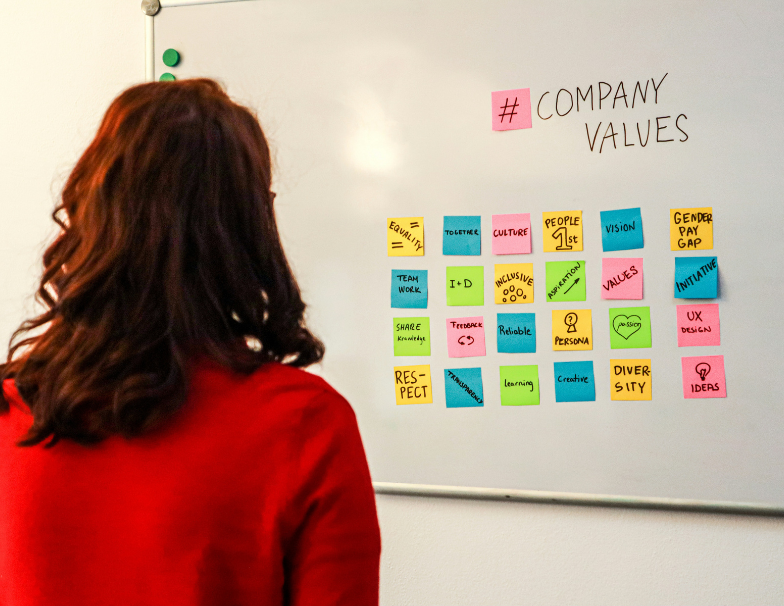Top 20 Effective Employee Recognition Ideas to Elevate Your Team

Employee recognition drives engagement, motivation, and retention. Valued employees are more productive and loyal. This article explores the benefits, implementation strategies, and practical ideas to boost team morale.
Key Takeaways
- Employee recognition boosts engagement, loyalty, and productivity by making employees feel valued and appreciated.
- Implementing effective recognition programs—formal, informal, and peer-to-peer—can significantly reduce turnover rates and improve workplace culture.
- A successful recognition strategy must align with company values and involve clear objectives, leadership participation, and regular assessments to measure effectiveness.
Why Employee Recognition Matters

Employee recognition significantly influences how valued employees feel within an organization. Regular recognition enhances employee engagement and drives performance by making individuals feel more connected to their work. When employees know that their contributions are acknowledged and valued, they are more likely to contribute meaningfully to business goals.
Recognizing employees isn’t just a nice-to-have; it’s a strategic imperative that can transform your Company’s success.
Boosting Employee Engagement
Employee recognition is important because:
- It fosters loyalty and engages employees.
- When employees feel appreciated, their commitment to the company increases, leading to higher job satisfaction and productivity.
- Recognition significantly improves overall engagement levels among employees.
- Regular feedback helps employees see their growth and shows appreciation for their efforts.
Personalized recognition increases employee engagement by tailoring recognition to individual preferences. Key points include:
- Offering consistent and personalized recognition helps build stronger connections with employees.
- Recognition from management significantly impacts effort, with 69% of employees reporting increased effort when recognized by leaders.
- Frequent recognition from managers can lead to employees being over three times more likely to be engaged.
Companies can encourage regular recognition by:
- Making positive feedback easy to give daily or weekly.
- Establishing a routine for recognition practices to maintain motivation and engagement over time.
- Celebrating achievements, such as individual goals, to reinforce a recognition culture.
- Acknowledging outstanding contributions to motivate employees and sustain team momentum.
Recognizing individual contributions develops special skills and builds confidence in team members. Recognition from management keeps workers motivated towards high performance. Feeling appreciated through recognition enhances employees’ perception of their value within the organization. Consistent and personalized recognition builds stronger connections with employees, leading to sustained engagement and loyalty.
Enhancing Workplace Culture
Employee recognition has several positive effects:
- Lifts spirits
- Boosts motivation, engagement, and productivity
- Creates a positive recognition environment that enhances work pride and collaboration
- Fosters an atmosphere where staff feels appreciated and motivated
- Improves workplace culture
- Reduces employee turnover rates
A culture of recognition involves embedding appreciation into everyday practices. Key elements include:
- Peer recognition enhances team cohesion by acknowledging small contributions that may go unnoticed.
- Successful recognition practices strengthen culture and foster lasting employee engagement.
- Leadership recognition signals care and attention, reinforcing company culture.
- Organizing team events and outings strengthens workplace relationships and enhances team morale.
Offsite designs experiences that celebrate achievements and boost morale. These include:
- Team-building events that reinforce collaboration and strengthen team relationships.
- Team celebrations that acknowledge achievements and strengthen bonds among coworkers.
- Incorporating regular recognition into the daily workflow to foster a positive company culture where employees feel valued and motivated.
Reducing Turnover Rates
Employee recognition programs can lead to a 31% decrease in turnover. Recognizing employees enhances their loyalty, making them more likely to stay with the company. Effective recognition leads to extended retention of employees. Recognizing small successes is vital for reinforcing an employee’s sense of purpose at work.
Monetary recognition is 20% more effective than non-monetary recognition in reducing turnover rates. By acknowledging employees’ hard work and employees' contributions, companies can increase job satisfaction and loyalty, leading to reduced turnover rates.
A consistent and meaningful recognition program can significantly impact employee retention and overall organizational success.
Types of Employee Recognition Programs

Employee recognition programs fall into formal, informal, and peer-to-peer categories, each offering different scales and methods of acknowledgment. Formal recognition includes structured awards like employee-of-the-month and performance bonuses, planned in advance. Informal recognition includes spontaneous gestures like shout-outs during meetings or sending peer eCards. Peer-to-peer recognition promotes teamwork and mutual respect through colleague appreciation.
Learning and development opportunities formally recognize employees’ work. Surprise lunches or snacks convey appreciation during busy workdays.
Team recognition can include methods such as team awards, company-wide meetings, and celebratory team events. Frequent recognition can enhance employee productivity and loyalty.
Formal Recognition Programs
Formal recognition includes:
- Structured awards like employee-of-the-month and performance bonuses, planned in advance.
- An employee-of-the-month program that effectively creates a culture of recognition.
- Annual recognition calendars that standardize appreciation efforts by noting significant dates and practices.
Structured recognition programs reinforce a positive attitude and boost employee morale.
Formal recognition programs offer:
- A consistent and visible way to acknowledge achievements.
- Integration into the organizational culture to ensure sustained and impactful recognition efforts.
- Structured awards and planned events that create a sense of accomplishment and motivate high performance.
Informal Recognition Programs
Informal recognition includes spontaneous gestures like shout-outs during meetings or sending peer eCards. Informal recognition includes casual verbal praise and small gestures of appreciation. eCardWidget is a recommended tool for sending thank-you notes. eCards are advantageous for thank-you notes as they suit both peer and leader recognition.
Informal recognition methods are valuable for their spontaneity and personal touch. These gestures quickly uplift spirits and reinforce a positive work environment.
Incorporating informal recognition into everyday recognition creates a culture where expressing gratitude is natural and frequent, allowing individuals to receive recognition.
Peer-to-Peer Recognition
Peer-to-peer recognition promotes teamwork and mutual respect through colleague appreciation. It offers several benefits:
- Improves teamwork
- Boosts morale
- Enhances engagement
- Increases performance
Additionally, peer-to-peer recognition fosters a culture of social recognition and highlights collaboration wins.
The Kudos program at Atlassian allows team members to recognize each other’s achievements, enhancing the recognition culture. eCards provide a quick and effective way to show appreciation in peer recognition.
Peer recognition can include public announcements, digital systems, or thank-you notes. Encouraging peer-to-peer recognition and giving recognition ensures small efforts are noticed and promotes a supportive environment.
Examples of Effective Employee Recognition

Common manager-to-employee recognition forms include verbal praise, written appreciation, bonuses, and promotions. Employee recognition formats include manager acknowledgment, mutual recognition between peers, and team recognition. Effective recognition strategies involve personalized messages and public acknowledgment. Awards should also be integrated into performance reviews.
Peer recognition programs often use digital tools like eCards for easy appreciation messages. Innovative methods include unique awards, personalized gifts, and themed appreciation days.
These examples highlight the versatility and impact of effective recognition practices—ranging from employee recognition to positive feedback—that can drive outstanding performance. Included are sample messages and approaches that demonstrate how meaningful acknowledgment can make a real difference.
Personalized Thank-You Notes
Personalized thank-you notes encourage employees, express gratitude, and acknowledge their organizational impact. Thank-you notes are informal messages that quickly show gratitude for contributions. An example of personalized recognition is Texas Health Resources, which creates custom yearbooks with personalized messages from the CEO, managers, and coworkers to recognize milestone years of service.
Employers should ask employees what type of recognition they value most to ensure employee appreciation messages resonate personally. eCards enhance the personalization of thank-you notes, making them suitable for various employee recognition messages scenarios. Personalized thank-you notes make employees feel genuinely appreciated and valued.
Public Acknowledgment
Public recognition significantly acknowledges contributions, enhancing morale and motivation. Spotlighting employees during meetings effectively recognizes their efforts publicly. Specific verbal or written compliments during meetings or events are effective public praise methods. Specific compliments in public praise are more compelling and impactful than generic acknowledgments.
Extroverted employees may prefer public recognition as it aligns with their social nature. Recognition can be effectively communicated through newsletters and social media to engage a wider audience. Publicly acknowledging achievements fosters a culture of appreciation and recognition.
Professional Development Opportunities
Access to training effectively:
- Recognizes and nurtures career advancement aspirations.
- Provides professional development opportunities that recognize efforts and contributions.
- Helps employees grow skills, support career aspirations, and enhance organizational value.
Integrating professional development into recognition strategies motivates employees and builds a skilled, committed workforce. Investing in personal and professional growth creates a positive environment where employees feel valued and motivated.
Creative Employee Recognition Ideas

Key points about employee recognition:
- Recognizing small achievements reinforces employees’ sense of purpose in their roles.
- Recognizing achievements sustains employee motivation.
- An effective recognition program should align with the organization’s culture and needs.
Additionally, it is important to recognize employee achievements.
A recognition program should adapt to the specific goals and cultural nuances of each organization. Creative ideas include wellness initiatives, flexible work options, and team celebrations.
These innovative approaches enhance engagement and foster a positive workplace culture. Thinking outside the box helps create meaningful recognition experiences that resonate with employees.
Wellness Initiatives
Wellness programs recognize and promote employees’ physical and mental health. Wellness rewards in recognition programs promote physical and mental health. Wellness initiatives enhance workplace culture by showing care and concern for well-being.
Wellness initiatives reflect organizational company value in employee health, boosting morale and engagement. Prioritizing wellness creates a supportive environment where employees feel valued and motivated.
Flexible Work Options
Flexible work options:
- Demonstrate trust by recognizing responsibility and autonomy.
- Innovatively show appreciation to employees.
- Lead to higher job satisfaction and lower stress levels.
Flexible work options enhance engagement and improve performance. Providing flexibility to balance work and personal lives fosters a positive culture and increases retention.
Team Celebrations
Team recognition promotes cooperation and shared objectives. Team-based recognition celebrates group achievements and joint efforts, highlighting the value of the team’s efforts and workplace recognition. An office party or catered lunch recognizes employees.
National Employee Appreciation Day, on the first Friday of March, celebrates employees. Offsite integrates team recognition and manager practices into customized events. Celebrating team achievements enhances morale and fosters camaraderie among employees.
Planning an Effective Employee Recognition Program

Implementing a recognition program is a good first step to create a culture of recognition. An effective recognition program must be sustainable and fit the organization. Awareness of factors for sustainability and effectiveness is crucial in building a recognition culture. When designing a recognition program, identify critical but easy-to-overlook areas to celebrate.
No universal recognition program applies to all organizations. Tailoring the program to the organization’s needs and culture ensures meaningful and impactful recognition efforts.
Setting Clear Objectives
Defining the purpose of a recognition program involves:
- Clarifying objectives and desired outcomes.
- Creating a roadmap for the recognition program.
- Helping measure its success.
- Conducting regular assessments of employee feedback to guide adjustments and enhance effectiveness.
Continuous improvement based on regular evaluation ensures that recognition efforts remain relevant and impactful. By setting clear objectives, companies can create a focused and effective recognition program that aligns with their organizational goals.
Involving Leadership
Leadership involvement is crucial as it sets the tone for the recognition culture within the organization. Leaders should actively participate in recognition programs to model the behavior expected from all employees. A frequent issue in recognition programs is the lack of buy-in from all levels of the organization, which can lead to inconsistent practices.
By involving leadership in recognition efforts, companies can ensure that recognition practices are consistent and meaningful. Leadership involvement can inspire employees and create a positive workplace culture where recognition is valued and celebrated.
Measuring Success
Organizations can measure the impact of their recognition initiatives through regular employee feedback and employee engagement software. By tracking key metrics such as employee satisfaction, engagement, and retention, companies can assess the effectiveness of their recognition programs.
Regular evaluations and adjustments based on feedback ensure that recognition efforts remain relevant and impactful. By measuring the success of recognition programs, companies can continuously improve their practices and create a positive and engaging work environment.
Overcoming Challenges in Employee Recognition
Common challenges and approaches in employee recognition include:
- Blind spots that companies can overlook.
- Implementing recognition without care, which can be detrimental.
- Offering spontaneous bonuses as an effective way for executive teams to recognize significant contributions.
- Using performance-based bonuses to fuel higher revenue and encourage extra contributions among employees.
Recognition from peers creates a positive work atmosphere and fosters teamwork. Every employee receiving an annual bonus, like at NuStar Energy, serves as an example of a performance-based recognition system that can enhance engagement and employee rewards while also helping to reward employees and recognize employee’s hard work.
By addressing these challenges, companies can create a more effective and meaningful recognition program.
Avoiding Favoritism
Ensuring equitable recognition includes addressing biases that may affect how different employee contributions are acknowledged. Favoritism can lead to decreased motivation and engagement among employees. By recognizing all employees fairly and consistently, companies can create a positive work environment where everyone feels valued.
Strategies to avoid favoritism include:
- Setting clear criteria for recognition
- Involving multiple stakeholders in the recognition process
- Regularly reviewing recognition practices to ensure fairness
By avoiding favoritism, companies can maintain a positive workplace culture and motivate employees while also motivating employees to perform at their best.
Providing Specific Feedback
Specific feedback in employee recognition is essential for effective acknowledgment because:
- It enhances understanding of successes.
- It promotes the repetition of positive behaviors.
- It ties feedback to accomplishments.
- It encourages continued strong performance.
Recognition should be tailored to the individual’s preferences, making it more meaningful. By providing specific feedback, companies can ensure that their personal recognition efforts are impactful and appreciated by employees.
Aligning with Company Values
Recognition initiatives should be embedded into the organizational culture, making appreciation an integral part of everyday practices. Recognition efforts must reflect and reinforce the company’s values and goals. By ingraining appreciation into daily operations, companies can foster a stronger connection between employee contributions and the company’s core values.
Aligning recognition with company values leads to enhanced employee morale, increased engagement, and a more cohesive work environment. By aligning recognition practices with organizational culture, companies can create a positive and motivating work environment.
Summary
Employee recognition is a powerful tool that can transform your workplace by boosting engagement, enhancing culture, and reducing turnover rates. By implementing a variety of recognition programs and practices, companies can create a positive and motivating work environment where employees feel valued and appreciated. From formal recognition programs to creative ideas like wellness initiatives and flexible work options, there are countless ways to recognize and reward your employees.
As you plan and implement your employee recognition program, remember to set clear objectives, involve leadership, and measure the success of your efforts. By overcoming challenges and aligning recognition practices with company values, you can create a culture of recognition that inspires and motivates employees to perform at their best. Start recognizing your employees today and watch your workplace transform into a thriving and engaged community.
FAQs
- Why is employee recognition important for organizational success?
Employee recognition is crucial for organizational success as it boosts engagement, cultivates a positive workplace culture, and lowers turnover rates. These factors collectively enhance productivity and drive better business outcomes.
- What are some examples of informal recognition methods?
Informal recognition methods effectively boost morale and engagement, such as shout-outs during meetings, sending peer eCards, and providing casual verbal praise. These practices foster a positive workplace culture.
- How can companies avoid favoritism in their recognition programs?
To avoid favoritism in recognition programs, companies should establish clear criteria for recognition, engage multiple stakeholders in the process, and periodically review their practices to maintain fairness. This approach fosters an inclusive culture and ensures all employees feel valued.
- What are the benefits of offering professional development opportunities as a form of recognition?
Providing professional development opportunities not only acknowledges employees' contributions but also enhances their skills and career growth, resulting in a more dedicated and capable workforce. This approach fosters engagement and loyalty among employees.
You may also like
Unique spaces for your next offsite
Find distinctive venues for your upcoming corporate retreat.
Stay Updated with Our Insights
Get exclusive content and valuable updates directly to you.







